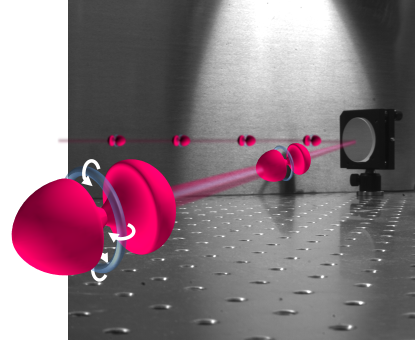News Story
UMD Ties with Stanford, MIT for Most Researchers on 2015 DOD Multidisciplinary Research Grants
COLLEGE PARK, Md. – University of Maryland researchers are involved with more than a quarter of the research teams awarded 2015 Multidisciplinary University Research Initiative (MURI) grants by the Department of Defense (DOD). UMD is represented on six of the 22 teams that received awards, putting UMD in a three-way tie with the Massachusetts Institute of Technology and Stanford University for the most grants involving any one university in 2015. UMD is also the lead institution on one of the awards.
A highly competitive program, the MURI program supports research teams, primarily at academic institutions, whose work spans multiple traditional science and engineering disciplines in order to accelerate research progress. The Army Research Office, the Air Force Office of Scientific Research, and the Office of Naval Research solicited proposals in 19 topics important to the DOD. After a total of 289 white papers were submitted, followed by a total of 76 proposals, 22 teams were selected to receive awards worth a total of $149 million over the next five years. MURI awards provide students and researchers with long term support that is important for discovery and applied research programs.
"The University of Maryland's outstanding performance in securing these MURI awards, tied for the highest number of any university, demonstrates our world class, interdisciplinary research expertise in science and engineering," said UMD Vice President and Chief Research Officer Patrick O'Shea.
MURI award recipients include the following UMD researchers:
Professor Wolfgang Losert of the Department of Physics, the Institute of Physical Sciences and Technology (IPST), and the Institute of Research in Electronics and Applied Physics (IREAP), is the lead on a successful MURI proposal entitled "Understanding and Controlling the Coupled Electrical, Chemical & Mechanical Excitable Networks of Living System." Professor Patrick Kanold (Biology) and Professor John Fourkas (Chemistry and Biochemistry) will also participate in the research. The initiative is led by the University of Maryland.
Professor Mohammad Hafezi of the Department of Electrical and Computer Engineering (ECE), the Joint Quantum Institute (JQI), and IREAP will join a MURI effort to study "Engineering Exotic States of Light with Superconducting Circuits." This MURI effort is led by Princeton University.
Professor Kiyong Kim (Physics/IREAP) and Professor Howard Milchberg (ECE/Physics/IREAP) will join a MURI project entitled "Harnessing Strong-Field MidInfrared (IR) Lasers: Designer Beams of Relativistic Particles and THz-to-X-ray Light." The initiative is led by the University of Colorado, Boulder.
Professor YuHuang Wang (Chemistry and Biochemistry) will be joining a MURI project entitled "A 4D Nanoprinter for Making and Manipulating Macroscopic Materials.” The initiative is led by Northwestern University.
Professor Bryan Eichhorn (Chemistry and Biochemistry) and Professor Michael Zachariah (Chemistry and Biochemistry) will be joining a MURI team working on a project entitled "Metalloid Cluster Building Blocks and Their Inclusion with Composite.” This research project is led by Johns Hopkins University.
Professor Sarah Bergbreiter (Mechanical Engineering and Institute for Systems Research) will be joining a MURI team working on a project entitled “Evolutionary Mechanics of Impulsive Biological Systems: Guiding Scalable Synthetic Design.” The initiative is led by Duke University.
Over the past 29 years, the DOD's MURI program has resulted in significant capabilities for U.S. military forces and opened up entirely new lines of research. Visit the DOD website to learn more about the MURI program and the 22 research initiatives that were awarded.
In a March 3 Science magazine “ScienceInsider” news article, News Editor David Malakoff noted: “Since it was founded in the mid-1980s, MURI has become a mainstay of DOD’s basic research programs, accounting for about one-quarter of the $1 billion in basic research funding that the Pentagon spends annually at U.S. universities. In some fields, including computer science, engineering research, and math, the military is now the dominant U.S. funder of fundamental science. Whereas many of DOD’s funding efforts focus on single-investigator grants, MURI aims to unite researchers from different disciplines and universities on a single project.”
Published June 9, 2015






